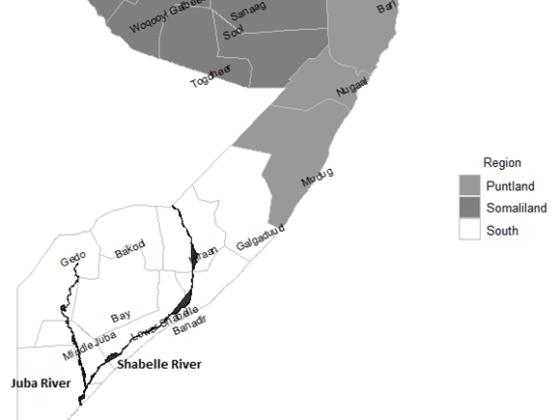Kaveh Madani, the Henry Hart Rice Senior Fellow at the MacMillan Center for International and Area Studies of Yale University, is an environmental scientist, educator, and activist with expertise in modeling and analyzing complex human-nature systems. He has previously served as the Deputy Vice President of Iran in his position as the Deputy Head of Iran’s Department of Environment, the Vice President of the UN Environment Assembly Bureau, and Chief of Iran’s Department of Environment’s International Affairs and Conventions Center. He has received a number of awards for his research, teaching, as well as outreach and humanitarian activities, including the New Faces of Civil Engineering recognition, the Hydrologic Sciences Early Career Scientist Award, the Arne Richter Award for Outstanding Young Scientists, and the Walter Huber Civil Engineering Research Prize. Dr. Madani presented “Wicked Human-Water Problems: Can We Solve One Problem without Creating New Ones?” on Friday, November 22, 2019 to the Department of Engineering Systems and Environment at UVA.
Thank you for your talk exploring the complexity of finding solutions to real world water challenges. What is the fallacy of solving water shortages by simply bringing in more water via inter-basin water transfers?
Water shortage in a region is normally a symptom of improper development in that region that does not have enough resources to meet its growing demand. Curing a symptom without addressing the main cause will fail eventually even if the symptom is gone for a while.
We have frequently seen around the world that increasing water supply through engineering solutions such as inter-basin water transfer, building reservoirs, digging deeper wells, and desalination in absence of measures for controlling water demand can lead to increased water consumption. This is because increasing water supply promotes development and population growth, eventually leading to increased water consumption and water shortage.

Why do so many engineered solutions to water shortages ultimately fail to solve the water crisis?
They do fail because we, as engineers, often fail to comprehend the full problem. The solutions that are based on an incomplete understanding of the complex problem might temporarily be able to cure the problem symptom such as water shortage, but the unintended consequences of our solutions can eventually exacerbate the problem. To solve the problem, we have to pay attention to the drivers and mechanisms that produce the problems. To a water engineer, water shortage is normally defined as a volumetric mismatch between water consumption and water supply. This motivates engineering innovations that target equalizing water supply and demand without paying attention to the socio-economic drivers behind water demand changes.

Note that based on these arguments, one should not conclude that water supply solutions are bad. Instead, we should understand that increasing water supply is an incomplete solution and to effectively solve water shortage problems we have to complement our engineering solution with policy solutions, regulations, and technologies that can limit/reduce water consumption. A smart water engineer must think beyond volumetric units and hydraulic principles.
As opposed to an analyst asking “what is the ‘optimal’ solution?”, what would be better questions to address to help decision-makers improve a system?
The type of questions we need to ask depends on what we are trying to do. Finding the ‘optimal’ solutions is really valuable and we should be thankful to those who put efforts into optimization efforts. But we also need some people who think about feasibility. Solely identifying the optimal solution will not move us away from the status quo. We also need to find out if our proposed solution is achievable in practice given the socio-economic and political characteristics and constraints of the problem. Additionally, we need to identify the feasible pathways to achieve our proposed solutions.
So, asking “is the optimal solution achievable (or what I call ‘stable’ in the game theory language)?” and “what are the practical pathways to achieve the proposed solution?” will help us revise our thoughts, approach, and proposed solutions.
Are there other key issues that an analyst should consider before embarking into helping to address wicked water problems?
I wish I had the golden list of the key issues that we should consider to address wicked water problems. But these problems have been wicked and will remain wicked. We might never be able to solve them completely, but we can pay attention to certain principles to reduce our chance of failure and making sure that our solutions won’t worsen the problem. So, I think we must note that:
The root causes of water problems are often out of the conventional boundaries of water modeling and management.
- Success in computation does not imply success in understanding, no matter how sophisticated our mathematical models are.
- Being ambitious is good but to solve problems in the real world, we also need to care about the practicality of our solutions.
- The whole human-water problem is always greater than the sum of its parts. One cannot find the solution of a wicked problem by breaking it into pieces and solving each piece separately.
- Today’s problems have been created by our smart solutions to yesterday’s problems. So, our solutions will also have some unintended consequences that we need to carefully consider.
Recommended readings
Madani K. (2019) “The Value of Extreme Events: What Doesn’t Exterminate Your Water System Makes it More Resilient”, Journal of Hydrology, Vol. 575, 269-272, doi: 10.1016/j.jhydrol.2019.05.049. https://e8bdc996-14c8-4b50-8118-d8e7db2f50a0.filesusr.com/ugd/34bbdd_95d0a415be0a4ec3a22bf45a887886d9.pdf
Hjorth P., Madani K. (2014) “Sustainability Monitoring and Assessment: New Challenges Require New Thinking”, Journal of Water Resources Planning and Management, Vol. 140(2): 133-135, doi: 10.1061/(ASCE)WR.1943-5452.0000411. https://ascelibrary.org/doi/full/10.1061/%28ASCE%29WR.1943-5452.0000411
Gohari A., Eslamian S., ^Mirchi A., Abedi-Koupaei J., Massah Bavani A., Madani K. (2013) “A Fix that Backfired: Water Transfer as a Solution to Water Shortage”, Journal of Hydrology, Vol. 491, 23-39, doi: 10.1016/j.jhydrol.2013.03.021. https://e8bdc996-14c8-4b50-8118-d8e7db2f50a0.filesusr.com/ugd/34bbdd_dab8839c97d2486babecf8188c8c8bb5.pdf





